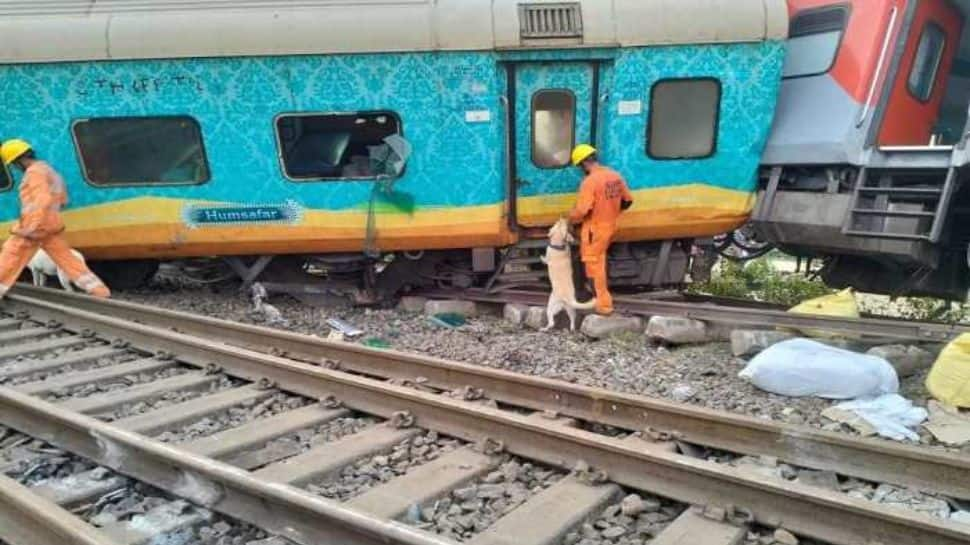By 2026, India is claiming to put in operation the first bullet train project in the country. The country is boasting of Vande Bharat Trains, high-speed locomotives and world-class stations to the world but on the ground, the situation remains grim, fragile and stressed. The Indian Railways is suffering from many illnesses and every now and then, it turns into a disaster leading to the loss of common lives. While then train accidents were a common phenomenon a decade ago, there has been a significant decline in such accidents. However, the India Story that the world is watching keenly deserves ‘zero’ accident cases as people are paying more for tickets compared to a decade ago.
Another train accident shook the country this morning with at least 15 people losing their lives till now, and over 60 are reported injured. The accident happened after the Kanchanjungha Express collided with a goods train on Monday morning near New Jalpaiguri. This is the second such incident since June last year. It was only last June when the deadly Balasore train accident in Orissa took the lives of 290 people and left over 1000 people injured, making it the worst train accident incident since 1995.
Weeks before the Balasore train accident, Railways minister Ahswini Vaishnaw boarded a train equipped with the Kavach system. The train headed for a trial collision to check the effectiveness of the Kawach system and it worked wonders as both the trains came to a half before the collision. However, the Indian Railways has failed to implement the system on a majority of the routes so far.
It seems that the Indian Railways is still not working on the root cause of these accidents. Despite claiming for the modernisation of the railway sector in India, Railway Minister Ashwini Vaishnaw could not avert the second biggest train accident in the last year.
Indian Railways’ Shortcomings
Reduced Workforce: According to Railway minister Ashwini Vaishnav, there were almost 3.15 lakh vacant posts out of the total sanctioned strength of the railway workforce in 2023. This is quite alarming as this increases the working hours of the existing Railway employees, reducing their rest periods, especially for the loco pilots, leading to fatigue, stress, and burnout. This can be one of the main reasons of the the railway accidents in India.
Poor Infrastructure: It is not unknown that India has massively congested railway lines. We are about to roll on Bullet trains soon but our traditional trains still lack proper maintenance. According to a report by the Commission of Railway Safety, total number of train accidents has increased to 48 in the year 2022-23 as against 35 during the year 2021-22. The report states that the number of serious train accidents had increased to 04 accidents in 2022-23 as against 2 accidents in 2021-22. The majority of these accidents involved passenger trains.
Lack of ‘Kavach’ Installation: In 2022, India unveiled ‘Kavach’, an automatic train protection system designed to prevent train collisions. The government passed a tender to cover a total of 3,000 km of rail network under Kavach, covering the Delhi-Mumbai and Delhi-Howrah rail network. A total of Rs 798.98 crore was allotted for the installation of this anti-collision system.
Notably, the inspection of the Balasore train accident revealed that the anti-train collision system was not installed on the route where the tragic train accident took place.
As of June 2024, 6,000 km of Kavach have been tendered, with deployment completed on 1,465 route kilometres and 139 locomotives (including Electric Multiple Unit rakes) in the South Central Railway zone. According to Railway Board member Jaya Varama Sinha, the Kavach system has not yet been implemented on the Guwahati route. Even if the government has covered the 6000 Km distance of the railway routes, it is less than 92% of the total railway network in India. Despite its cost-effectiveness, the majority of Indian Railways’ routes have yet to be equipped with this system. This slow-paced development will do no good to the lakhs of people who are travelling on a daily basis by Railways.
Besides the modernisation of the trains, Indian Railways should pay keen attention to safeguard the lives of the train commuters. While India has managed to reduce the number of train accidents, deadly incidents like today’s call for a thorough inspection and introspection of routes, tracks and signalling system of the Indian Railways.

